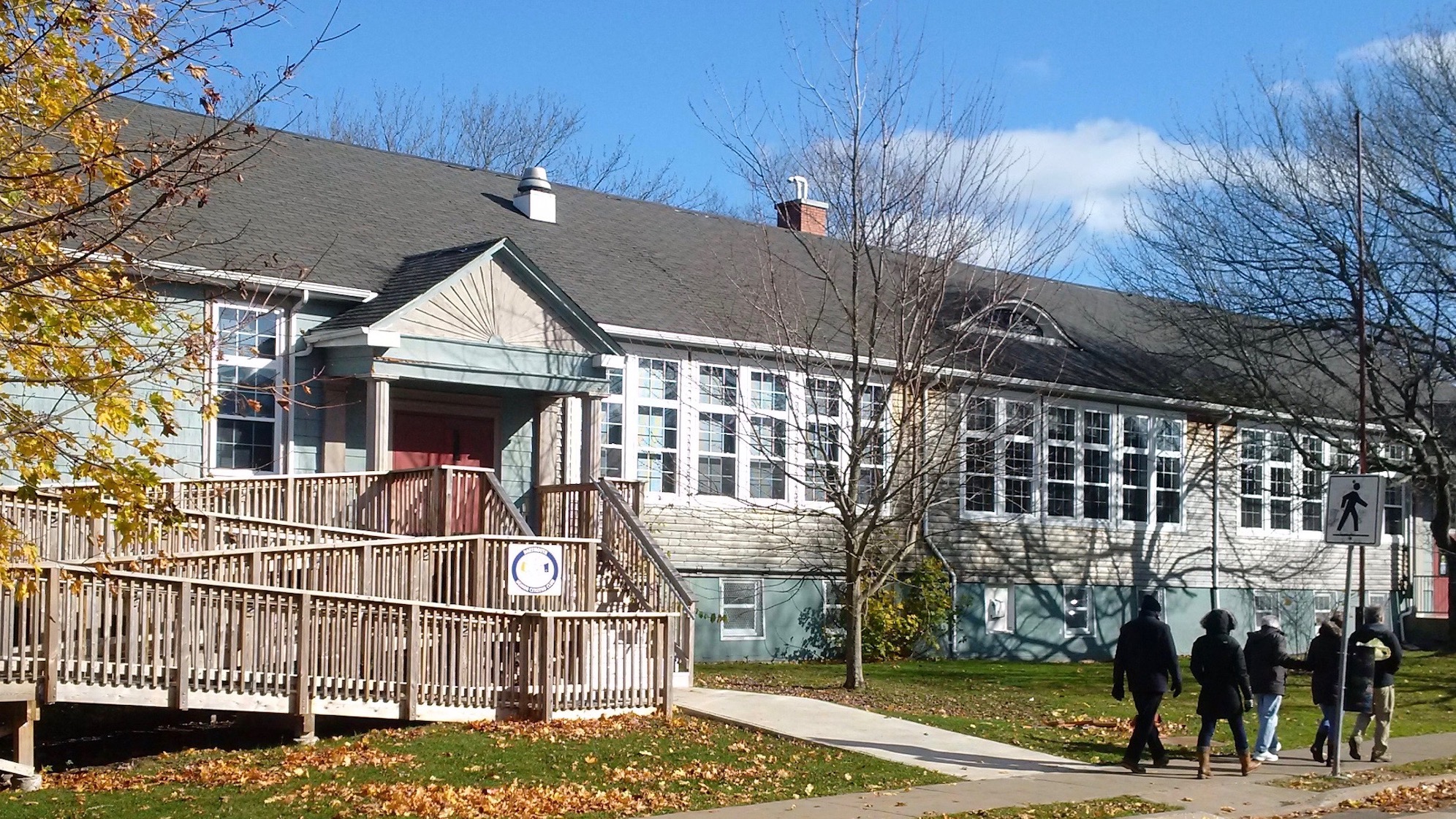Dartmouth residents working to save old Findlay School
Public hearing to come on granting heritage status to the 1930s building

caption
The Findlay Community Centre, 26 Elliot St., in Dartmouth, provides services in a historic context.A recreation centre might be Dartmouth’s last chance to preserve an old public school.
The Findlay Community Centre, built in 1932, is in the process of becoming a registered heritage building. Halifax regional council voted Tuesday to set a date for a public hearing.
Formerly the Findlay School, the municipal recreation centre on Elliot Street hosts events, meetings and classes, and has a pottery studio and a gym.
The building, for the most part, looks the way it did 87 years ago. A gym was attached to the back, and ramps for accessibility were added to both doors, but otherwise the historic architecture of the building has been maintained, said a report prepared for council. Related stories
If a building has heritage status, it means that it cannot be destroyed or significantly altered. It may also qualify for funds for maintenance and advice from heritage staff.
What’s old?
The Findlay Community Centre is in Coun. Sam Austin’s district. He’s happy to see the heritage registration process moving along for the old school. Austin thinks it’s a good thing that the community centre can be registered as a heritage property, even if it is relatively young.
“You get a lot of points if your building is old. I think that’s somewhat limiting because rather than looking at architectural history, and then selecting properties that are best exemplars of a particular style, or period, we just kind of say, ‘Is it a Victorian? If it’s a Victorian it’s worth a lot of points,” Austin said. “I think we lose sections of our history, in that approach.”
The school was designed by Douglas A. Webber, born in Lake Charlotte, N.S. This was the first school he built. The one-storey, wood-frame structure features a gable roof and two symmetrical doors with decorations and pillars. It’s a typical design for what is called a “bungalow school,” a sort of midway point between one-room schoolhouses and large brick school buildings.
Other bungalow schools, characteristic of this time, have either been destroyed or underwent heavy renovations.
“To preserve one as a historical building is a good idea because it preserves a very common, important form of school building. It’s a page out of history,” said Maura Donovan, who sent in the heritage property application.
Donovan is a Dartmouth resident whose property borders the Findlay Community Centre. She’s a Dartmouth history enthusiast, and discovered the history of the Findlay School while researching the history of her own house.
Saving Findlay
She realized how much the community cares about the building when the centre was almost shut down in 2014 to consolidate services with the Dartmouth Sportsplex.
“The neighbours around Findlay really responded with a lot of enthusiasm,” Donovan said. “I’ve campaigned in elections and I’ve never campaigned for anyone as popular as Findlay.”
Donovan helped hand out flyers that said “Save Findlay” in the parking lot to people who were coming and going from classes. HRM ultimately decided in 2015 to keep the centre open.
“Everyone had a story,” she said. “They would say ‘I went to this school and now I bring my grandchild to classes here.’”
The architect of the school went on to design more schools, among other buildings, throughout the province. Webber’s architectural firm is still designing schools to this day, including the LeMarchant-St. Thomas Elementary school near Dalhousie University that was completed this summer.
Donovan said the Findlay school is a monument to Dartmouth’s history. Children can stand in the old school halls and see what other children saw almost a hundred years ago.
“We need to preserve it because if we don’t preserve Findlay, we don’t have any public buildings that are actually an old school,” Donovan said. “Dartmouth has been educating kids publicly for 200 years and we would have no buildings that speak to that.”
The next step in the process is a public hearing. The date has not yet been set.
About the author
Lucia Helder
Lucia Helder has interned at Maine Public and is the copy editor of the Dal Gazette.
